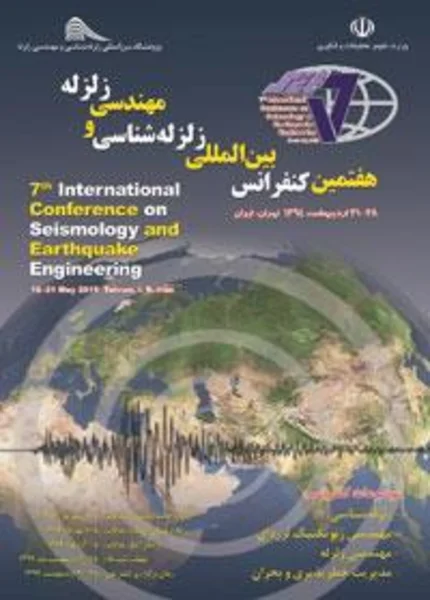-
numerical evaluation of the strike slip fault effects on the steel buried pipelines
جزئیات بیشتر مقاله- تاریخ ارائه: 1394/02/01
- تاریخ انتشار در تی پی بین: 1394/02/01
- تعداد بازدید: 663
- تعداد پرسش و پاسخ ها: 0
- شماره تماس دبیرخانه رویداد: -
pipelines are often referred as "lifelines" and this demonstrates that pipelines play an important role in human’s life. based on the damage mechanism of buried pipelines, seismic effects can be either caused by transient strain and curvature in the ground due to traveling wave effects or caused by permanent ground deformations; such as fault deformation, landslide, and liquefaction-induced soil movements. among them, the ground movements of active faults can have the most severe earthquake effects on buried pipelines. the traditional method of assessment of a buried pipeline subjected to seismic faulting is initially carried out using analytical methods. due to the limitations of these techniques for large deformation soil movement associated with fault displacement, non-linear finite element (fe) methods are widely used to assess the pipeline integrity. the fe analysis typically idealises the pipeline using discrete structural beam-type elements and the pipeline-soil interaction as discrete non-linear springs, based on the concept of subgrade reactions proposed by winkler. recent research suggested that the use of the discrete winkler element model leads to over-conservative results in comparison to the coupled continuum model. the principal reason for the conservatism is related to the poor modeling of realistic surrounding soil behaviour for large deformation events. in this paper the effects due to difference in ground motion from surface faulting has been studied using 3d finite element continuum model, winkler model and analytical method. the structural response of steel pipelines under strike-slip fault movement is examined numerically using the general purpose fe program abaqus. the nonlinear seismic response of buried pipeline under permanent ground deformation is analyzed using pseudo-static analysis method without considering the fracture of the soil. some influential factors, such as fault-pipeline crossing angle, backfill type and burial depth are considered in the analysis in order to draw some regular conclusions.
مقالات جدیدترین رویدادها
-
استفاده از تحلیل اهمیت-عملکرد در ارائه الگوی مدیریت خلاقیت سازمانی و ارائه راهکار جهت بهبود
-
بررسی تاثیر ارزش وجوه نقد مازاد بر ساختار سرمایه شرکت های پذیرفته شده در بورس اوراق بهادار تهران
-
بررسی تأثیر سطح افشای ریسک بر قرارداد بدهی شرکت های پذیرفته شده در بورس اوراق بهادار تهران
-
بررسی تأثیر رتبه بندی اعتباری مبتنی بر مدل امتیاز بازار نوظهور بر نقد شوندگی سهام با تأکید بر خصوصی سازی شرکت ها
-
تأثیر آمیخته بازاریابی پوشاک ایرانی بر تصویر ذهنی مشتری پوشاک ایرانی (هاکوپیان)
-
بکارگیری روش جستجوی الگو در gis به منظور تعیین سطح کشت بهینه محصولات کشاورزی
-
بررسی مقایسه ای اثرات ضد تشنجی عصاره آبی گیاه آکلیل کوهی و فنوباربیتال در موش سفید آزمایشگاهی
-
تحریم فروش قطعات هواپیماهای کشوری و نقض حقوق بشر
-
ارزیابی کیفیت زندگی و تاثیر آن در توسعه شهری بجنورد (مطالعه موردی محله جوادیه، شهرستان بجنورد)
-
computational simulation of flow and energy dissipation in stepped spillways
مقالات جدیدترین ژورنال ها
-
مدیریت و بررسی افسردگی دانش آموزان دختر مقطع متوسطه دوم در دروان کرونا در شهرستان دزفول
-
مدیریت و بررسی خرد سیاسی در اندیشه ی فردوسی در ادب ایران
-
واکاوی و مدیریت توصیفی قلمدان(جاکلیدی)ضریح در موزه آستان قدس رضوی
-
بررسی تاثیر خلاقیت، دانش و انگیزه کارکنان بر پیشنهادات نوآورانه کارکنان ( مورد مطالعه: هتل های 3 و 4 ستاره استان کرمان)
-
بررسی تاثیر کیفیت سیستم های اطلاعاتی بر تصمیم گیری موفق در شرکتهای تولیدی استان اصفهان (مورد مطالعه: مدیران شرکتهای تولیدی استان اصفهان)
-
اثربخشی ذهن آگاهی کودک محور بر کارکرد های اجرائی و اضطراب کودکان نارساخوان
-
تحلیل محتوای کتب هدیه های آسمانی پایه های چهارم، پنجم و ششم ابتدایی براساس مولفه های خلاقیت گیلفورد و بیکاردز
-
بررسی تاثیر استراتژی اقیانوس آبی در سازمان ها
-
بررسی انواع هدایت در قران کریم
-
effects of ammonium thiosulfate and guanyl thiourea as calcium ammonium nitrate inhibitors on fertilization and plants




سوال خود را در مورد این مقاله مطرح نمایید :